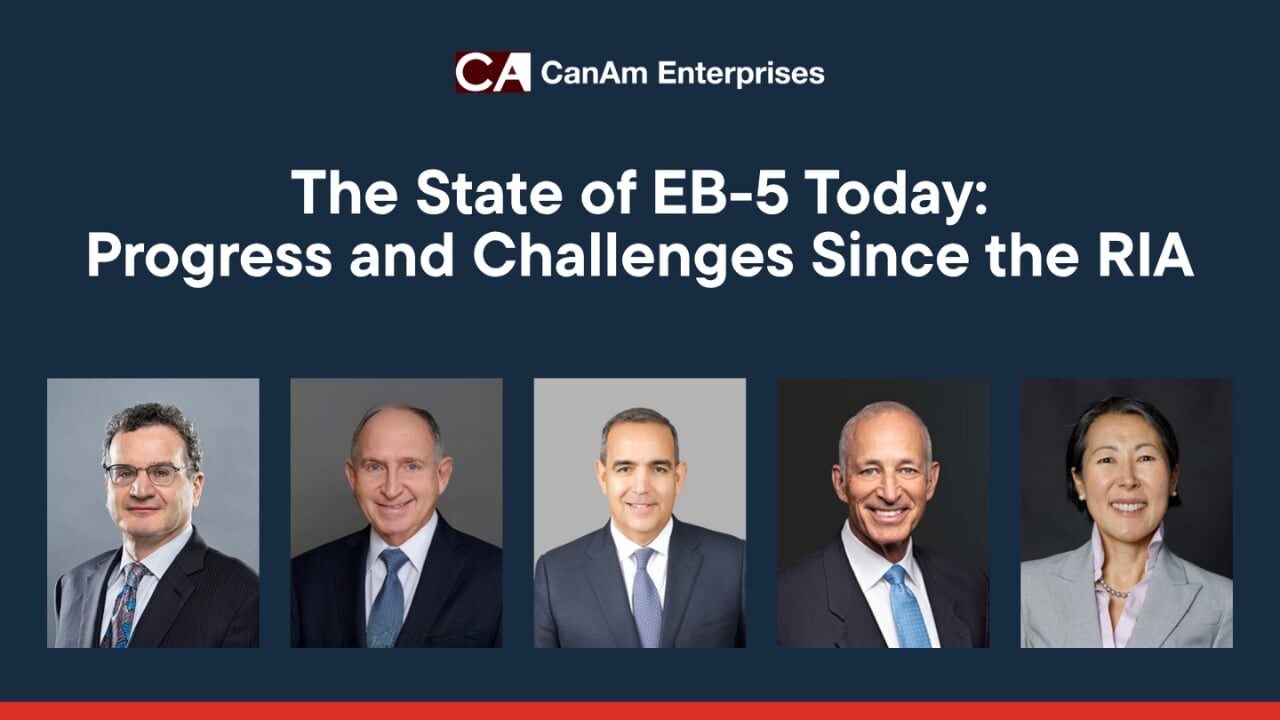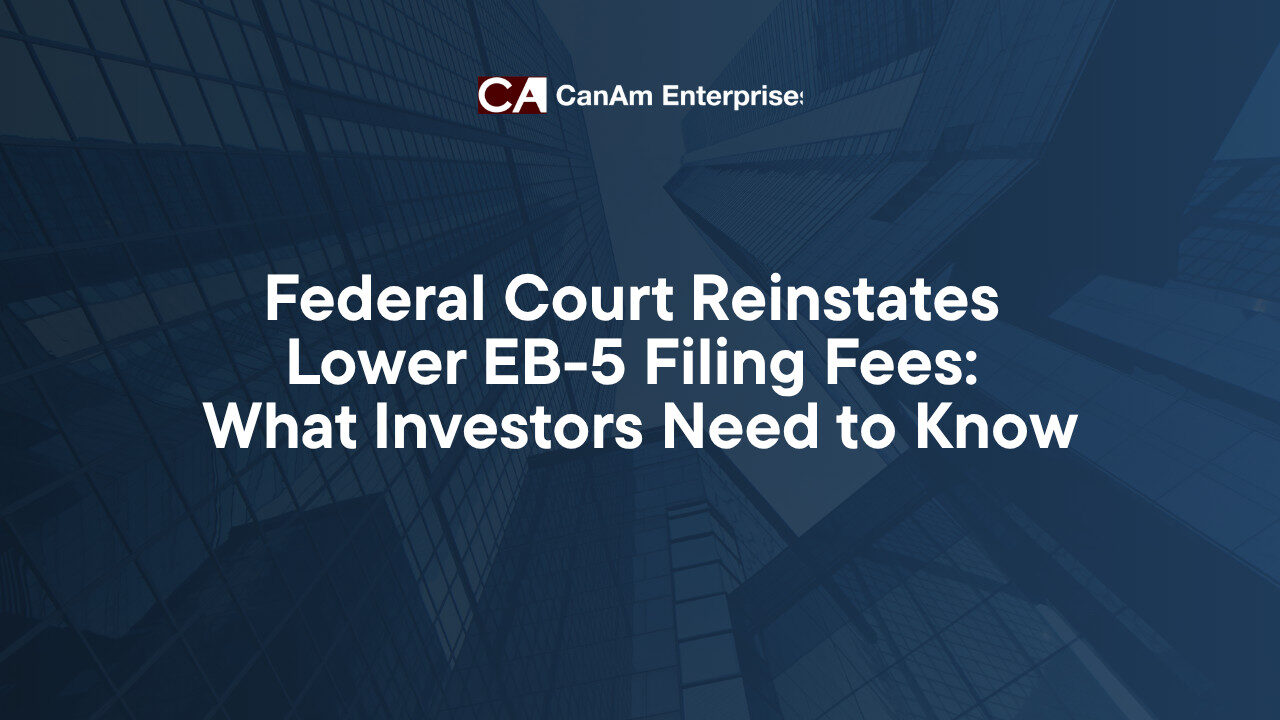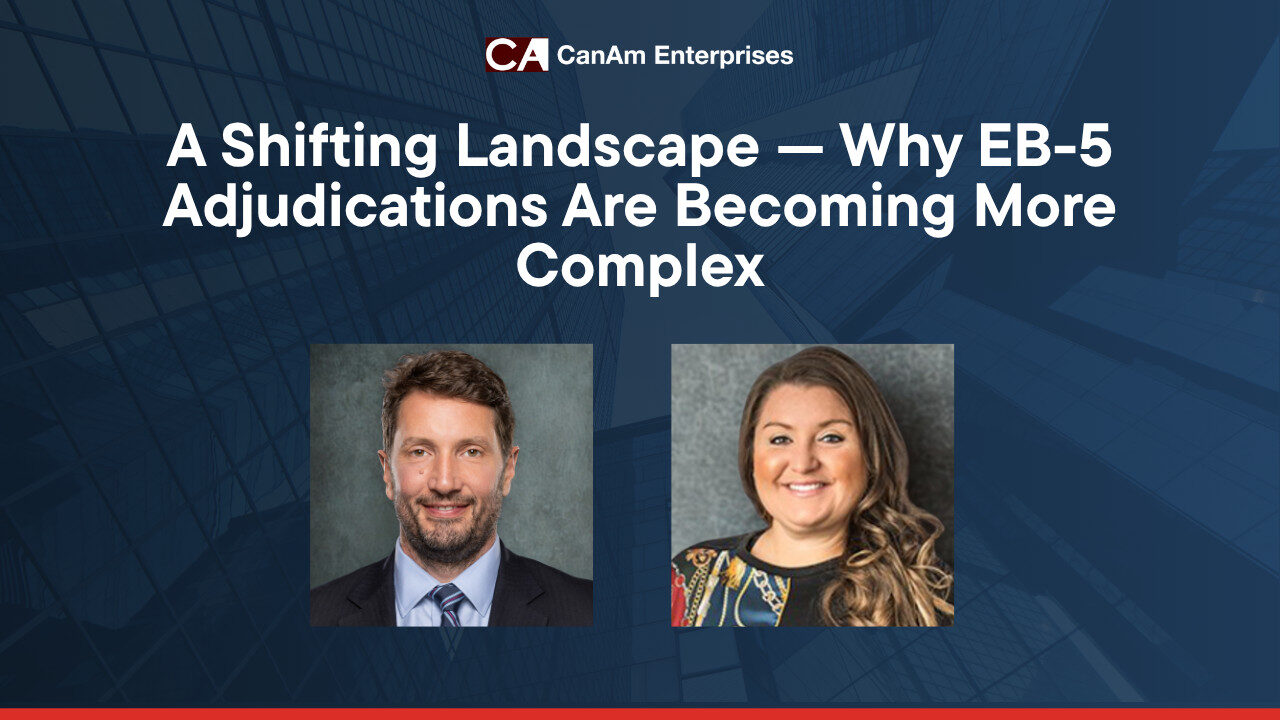The H-1B program has long been the most common path for skilled professionals to live and work in the United States. But as of September 2025, that path has become more complicated. A recent Presidential Proclamation introduced a new $100,000 employer-paid fee for H-1B petitions not yet filed.
For foreign professionals, this is another reminder of how unpredictable and employer-dependent the H-1B route can be. By contrast, the EB-5 Immigrant Investor Program offers stability, control, and a family-focused route to permanent residency.
Why H-1B Is Becoming Riskier
Even before this new filing fee, H-1B applicants faced steep challenges:
- Lottery odds: Hundreds of thousands apply each year for just 85,000 slots.
- Employer dependency: Your ability to stay in the U.S. depends on a company’s willingness and ability to sponsor you.
- Career restrictions: Job mobility is limited, and changing employers often requires new filings and delays.
- Green card backlogs: For professionals from countries like India and China, wait times can stretch decades.
- Ongoing uncertainty: Renewals, compliance checks, and political changes all affect your status.
Now, with the added $100,000 employer burden, companies will inevitably file fewer petitions. That means fewer opportunities for qualified professionals—and more families left uncertain about their U.S. future.
EB-5: A Pathway That Puts You in Control
The EB-5 Immigrant Investor Program allows foreign nationals to secure U.S. permanent residency by making a qualifying investment—$800,000 in a Targeted Employment Area (rural or high-unemployment). More importantly, EB-5 empowers you to take charge of your immigration destiny.
Here’s how EB-5 stands apart:
- Self-Sponsorship: No employer involvement. Your status isn’t tied to a company.
- No Lottery: Unlike H-1B, EB-5 is not left to chance.
- Family Security: Your spouse and children under 21 also receive green cards.
- Career Freedom: Work for any employer, start your own business, or pursue further education without visa restrictions.
- Interim Benefits: With concurrent filing, you can receive work authorization (EAD) and travel authorization (Advance Parole) while your petition is pending.
- Permanent Residency: EB-5 is designed as a direct route to the green card, unlike temporary work visas.
As Pete Calabrese, CEO of CanAm Investor Services, has explained: “Of all the immigration categories, EB-5 gives prospective immigrants the most control over their outcomes.”
What the Experts Say
For professionals who have experienced the frustrations of the H-1B lottery, EB-5 offers a refreshing sense of certainty. Immigration attorney Matt Galati has put it this way:
“So much of the U.S. immigration system is built on things you can’t control. You can’t control where you’re born. You can’t control whether you get picked in the H-1B lottery. EB-5, on the other hand, is one of the few categories where, if you meet the requirements, you can move forward with a clear roadmap.”
That control is life-changing. With EB-5, your ability to live in the U.S. is no longer dependent on random lottery selection, the financial decisions of your employer, or the uncertainties of political shifts.
Beyond Work: Family and Education Benefits
The advantages of EB-5 go well beyond career flexibility. For many families, the most important benefit is peace of mind:
- Children’s Education: With permanent residency, children can attend U.S. universities at the same tuition rates as domestic students and have the freedom to work during and after their studies without restrictive visa limitations.
- Family Unity: A single investment covers your spouse and children under 21, eliminating the stress of dependent visas with restrictions like the H-4.
- Long-Term Stability: Unlike H-1B, which maxes out after six years, EB-5 provides a pathway to a green card and, eventually, U.S. citizenship.
As Matt Galati noted in a recent discussion: “The great benefit of concurrent filing is it allows one to start life in the U.S. with a much more relative degree of certainty… you can remain in the country in authorized stay indefinitely until adjudication.”
EB-5 vs. H-1B: A Clear Comparison
| Feature | H-1B Visa | EB-5 Visa |
|---|---|---|
| Sponsorship | Employer required | Self-sponsored |
| Selection | Lottery-based + $100K filing fee | Direct if requirements met |
| Duration | Temporary (max 6 years) | Permanent residency |
| Family Benefits | H-4 dependents with work limits | Spouse + children under 21 green cards |
| Career Flexibility | Tied to employer sponsor | Free to work anywhere, or not at all |
| Education | F-1 or H-4 limits apply | Domestic tuition + freedom to work/study |
| Interim Benefits | None until green card sponsorship | EAD + Advance Parole while pending |
Why Now Is the Time to Consider EB-5
The new $100,000 employer fee is a powerful signal: the H-1B system is becoming more restrictive, more costly, and more uncertain. For foreign professionals and their families, the future of H-1B looks riskier than ever.
EB-5, by contrast, offers clarity and control. It allows you to chart your own course toward permanent residency, provide long-term security for your family, and enjoy the freedom to live, work, and study in the United States without restrictions.
As Matt Galati put it best: “You can’t control the H-1B lottery—that’s the nature of a lottery. But with EB-5, you have a real chance to take your immigration destiny into your own hands.”
Conclusion
The September 2025 Proclamation underscores what many already know: H-1B is a pathway filled with uncertainty. Between the lottery, employer dependency, and now a six-figure filing fee, the program leaves too much outside your control.
The EB-5 program is different. It offers a direct, reliable, and family-centered path to U.S. permanent residency. By investing strategically, you can eliminate the uncertainties of H-1B and secure a future defined by stability, opportunity, and freedom.





